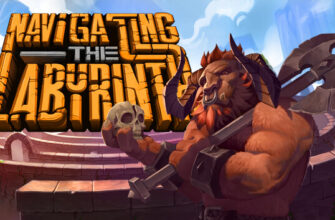In the pantheon of global sports rivalries, few command the fervor, history, and raw emotional intensity of the Old Firm derby. This isn`t merely a football match between two clubs; it is a crucible where centuries of cultural identity, religious allegiance, and political conviction converge. For the uninitiated, it might appear to be a simple clash for Scottish Premiership supremacy. For those entrenched in its legacy, it is a twice-seasonal, sometimes more frequent, test of spirit, pride, and, occasionally, sanity. Each encounter between Glasgow`s Rangers and Celtic transcends the ninety minutes, offering a narrative far richer and more complex than any league table can convey.
The Sporting Duopoly: A League of Their Own
To truly grasp the essence of the Old Firm, one must first acknowledge its undeniable sporting gravity. Since their inaugural meeting in 1888, Rangers and Celtic have established an unparalleled duopoly over Scottish football. Their combined trophy cabinet, overflowing with well over 100 league titles, stands as a testament to their enduring dominance, leaving virtually no room for other contenders. This sustained supremacy means that almost every season culminates with one of these two clubs lifting the coveted Premiership trophy. Consequently, their head-to-head fixtures are rarely “just another game”; they are often championship deciders, transforming each derby into a high-stakes chess match where tactical precision and raw courage are paramount.
Roots of the Rift: Beyond Goals and Saves
Yet, the ball on the pitch is but one thread in a much larger, intricate tapestry. The profound depth of the Old Firm rivalry lies in the deep-seated societal schisms it represents. Rangers traditionally draw their formidable support from Scotland`s Protestant and Unionist communities, seeing themselves as embodying and upholding British identity. Celtic, by stark contrast, are deeply entwined with the Catholic population, many of whom trace their lineage to Irish heritage and often lean towards Irish Republicanism. These distinct cultural and religious identities, forged over generations, are not simply affiliations; they are foundational aspects of supporter self-identification. While modern Scotland strives for unity, the derby remains a powerful, albeit often challenging, expression of these historical divisions. One might even observe that for some, football is merely the chosen battlefield for a much older, deeper contest of identities, played out with admirable theatricality.
The Cauldron of Passion: Matchday Atmosphere Unmatched
Stepping into Ibrox or Celtic Park on derby day is an experience that few other sporting arenas can replicate. The atmosphere is less a gentle hum and more a visceral, roaring tempest of sound, vibrant color, and unbridled emotion. Chants echo with historical significance, flags wave with fervent pride, and the collective will of tens of thousands of passionate fans creates an almost tangible, overwhelming force. This intensity is so profound that few players dare to cross the traditional divide. Since World War II, a mere handful of individuals have worn both jerseys, and a direct transfer between the clubs remains virtually unheard of – a silent, powerful testament to the deep-seated loyalties and the immense personal and professional pressure such a move would entail. It`s a stark reminder that in this particular rivalry, identity and allegiance often trump individual ambition.
Enduring Appeal: Redemption and Bragging Rights
Even when one club might be enduring a period of struggle, perhaps an unexpected early exit from demanding European competition, the Old Firm offers an unparalleled opportunity for immediate redemption. A victory against your fiercest rival can instantly soothe the sting of other defeats, providing a potent psychological boost and, more importantly, delivering coveted bragging rights for months to come. The inherent beauty, and indeed the perennial burden, of this rivalry is its perpetual relevance. No matter the league position, no matter the current form, the derby stands alone, a self-contained narrative of triumph and despair that demands unwavering attention.
Conclusion: More Than Just a Game
The Old Firm is not a rivalry that can be neatly encapsulated in statistics or mere tactical diagrams. It is a living, breathing entity, constantly evolving yet firmly rooted in a rich, complex past. It is a phenomenon that transcends the confines of sport, offering a poignant, often dramatic, reflection of Scottish society itself. For all its intensity, for all its occasional moments of regrettable discord, it remains an indispensable fixture on the global football calendar, an enduring testament to the power of shared history and contrasting identities. It is, quite simply, more than just a game; it is a cultural touchstone, a spectacle that reminds us how deeply sport can intertwine with the very fabric of human existence.








